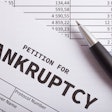By Mark F. Weiss, J.D.
Unless you’ve been interpreting images for the past five years without a break, you couldn’t help but notice the barrage of healthcare laws heading for adoption in the U.S. The bills address a plethora of U.S. and state healthcare issues, including antikickback protections, Stark self-referral concerns, Gramm-Leach-Bliley, and the Health Insurance Portability and Accountability Act (HIPAA), to name just a few. Chanting the new healthcare age mantra, "compliance is good, compliance is good," an army of lawyers and consultants has sold thousands of compliance plans to radiology groups across the country.
But why should a radiology group have a compliance plan? It's not that the plans aren't needed; the problem is that many groups adopt them for the wrong reason. In essence, doctors believe they must have a plan because it’s "required." To set the record straight, it’s not -- at least in the sense of being legally mandated.
Most consultants and, one would hope, all healthcare attorneys, will inform their clients that adopting a compliance plan alone is insufficient. The plan must be put into operation through the conduct of an active compliance program involving staff education, appointment of a compliance officer, baseline audits, reporting procedures, and the like. However, this is the point at which most compliance "experts" stop. In other words, they seek compliance for the sake of compliance.
This limited and limiting view is testimony to the fact that most healthcare attorneys lack any litigation experience. And consultants, by definition, have neither legal training nor litigation experience. In fact, it's interesting to observe how oblivious to risk-avoidance planning consultants can be.
By definition, drafting compliance plans involves interpreting applicable laws and regulations, and advising on how to conform conduct to the bounds of the law -- activities requiring a law license. If consultants can't assess the risks of engaging in the unauthorized practice of law, which is a crime (in fact, a felony in many states) for which they can be prosecuted, which renders them unable to enforce their fee agreement, and which results in the imposition of the standard of care by which attorneys are judged, then how can they correctly assess the compliance risks their physician clients face?
In reality, compliance planning is all about assessing the legal risks faced by the client radiology group. The bottom-line reason to adopt and to implement a compliance plan is to avoid legal risk. Adopting a plan but not implementing a working compliance program is of little to no benefit.
Similarly -- and this is the real issue -- compliance programs themselves are of little to no benefit unless they're part of a larger, coordinated effort to reduce liability and to protect the assets of both the radiology group and its physician owners and their families.
Accordingly, a comprehensive protection program involves coordinated protective elements at each level of organization: The group level, the physician level, and if the group is established as a collection of professional corporations (as in a partnership of professional corporations), at that intermediate level as well.
At the group entity level, regardless of whether it was formed as a corporation or partnership of professional corporations, the group must adopt and fully implement a compliance plan. Management functions should be spun off to a separate management entity. If the practice holds particularly valuable or particularly dangerous (as in liability-producing) assets, separate entities should be created to compartmentalize assets and liabilities. For example, if the group operates distinct practice locations, a separate entity should be formed for each. In the same manner, investment and side business interests should be operated through separate entities.
Depending on the nature of its assets and operations, as well as the potential for loss, the management entity might be headquartered, or domiciled, in a foreign jurisdiction. It might also be structured in multiple layers: for example, as a limited liability company domiciled in jurisdiction "A," with the LLC manager being a corporation domiciled in jurisdiction "B."
If the group-practice entity is a partnership of professional corporations, the radiologist owner of each constituent professional corporation should consider using a structure similar to that discussed above in connection with the master entity. In addition, each professional corporation should adopt a constituent-level compliance plan and implement it in coordination with the master entity’s compliance efforts. Depending on the nature of the master entity’s compliance program, a constituent-level plan can be very inexpensive to create and operate. In any event, it is "cheap insurance" which could be of tremendous benefit in the event that the group fails to properly implement its compliance program, or a claim filed under the radiologist owner's name triggers an investigation.
Each radiologist, whether a shareholder of the medical group or of a constituent professional corporation, should organize his or her finances and investment interests, including his or her interest in the various entities created at the group and, if applicable, professional corporation level, through the use of entities to protect and preserve assets in the event of a collapse upstream. Examples include the use of limited partnerships or limited liability companies, in some instances with general partners or LLC managers domiciled offshore. The extent of individual planning required, and the technique to accomplish it, will depend greatly upon the nature of assets held, existing financial and estate planning, among other factors.
Viewed properly, compliance planning is simply one of the elements of an overall protection program designed to avoid, at best, and to minimize, at least, the risks facing medical groups and their physician owners. The overall goal of compliance and protection planning is to protect the assets, and the families, of the radiologists from unnecessary risk. Significant efforts must be made to achieve that goal.
By Mark F. WeissAuntMinnie.com contributing writer
October 24, 2001
Mark F. Weiss is an attorney and former healthcare CEO. He practices law with Advisory Law Group of Los Angeles. His practice concentrates on the representation of physicians and medical groups in connection with a broad range of healthcare, compliance, and risk-avoidance issues. Mr. Weiss may be contacted at 310-843-2800/949-548-4700 or via e-mail at [email protected]. The firm’s Web site is www.advisorylawgroup.com.
Copyright © 2001 AuntMinnie.com















